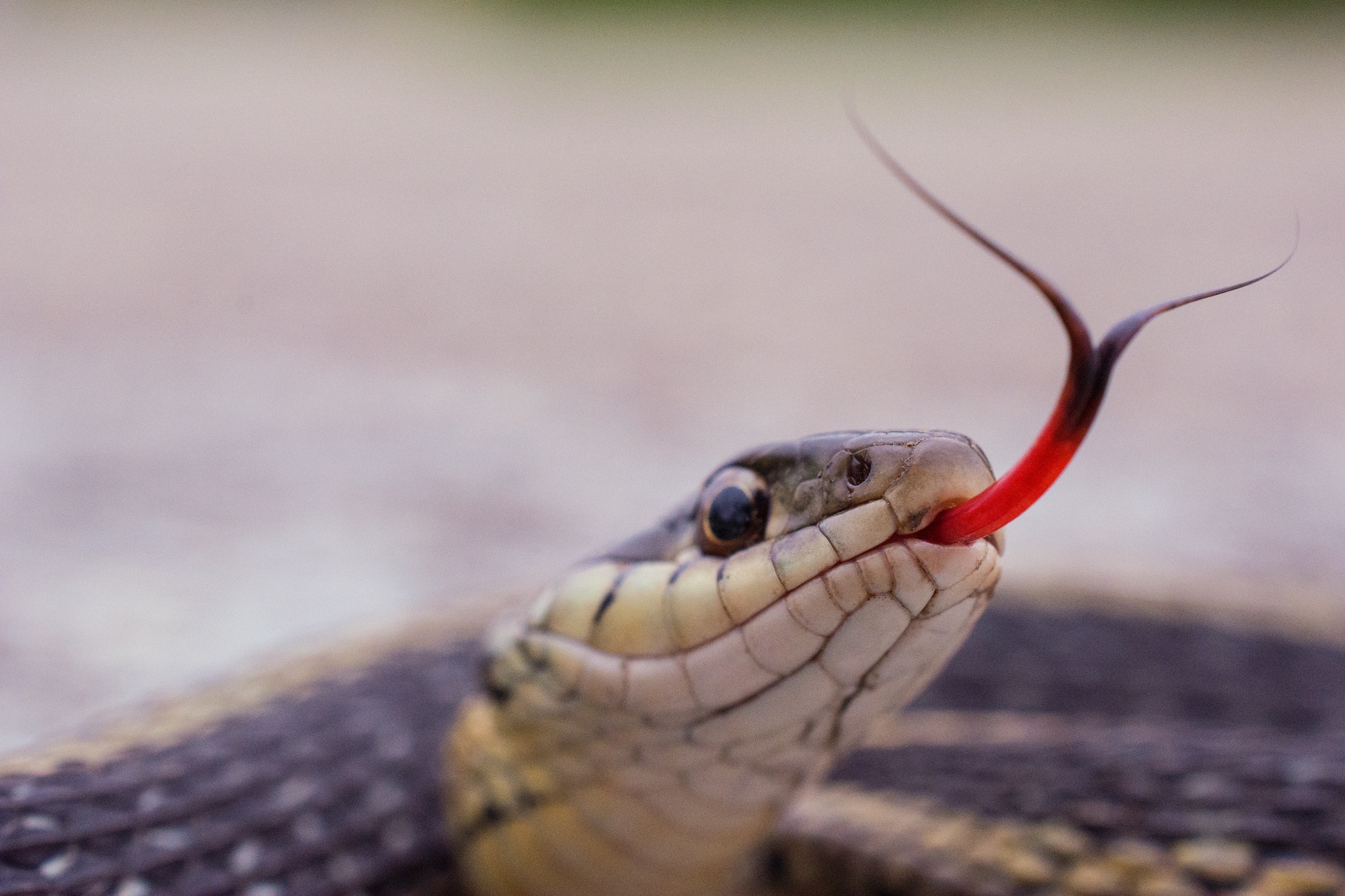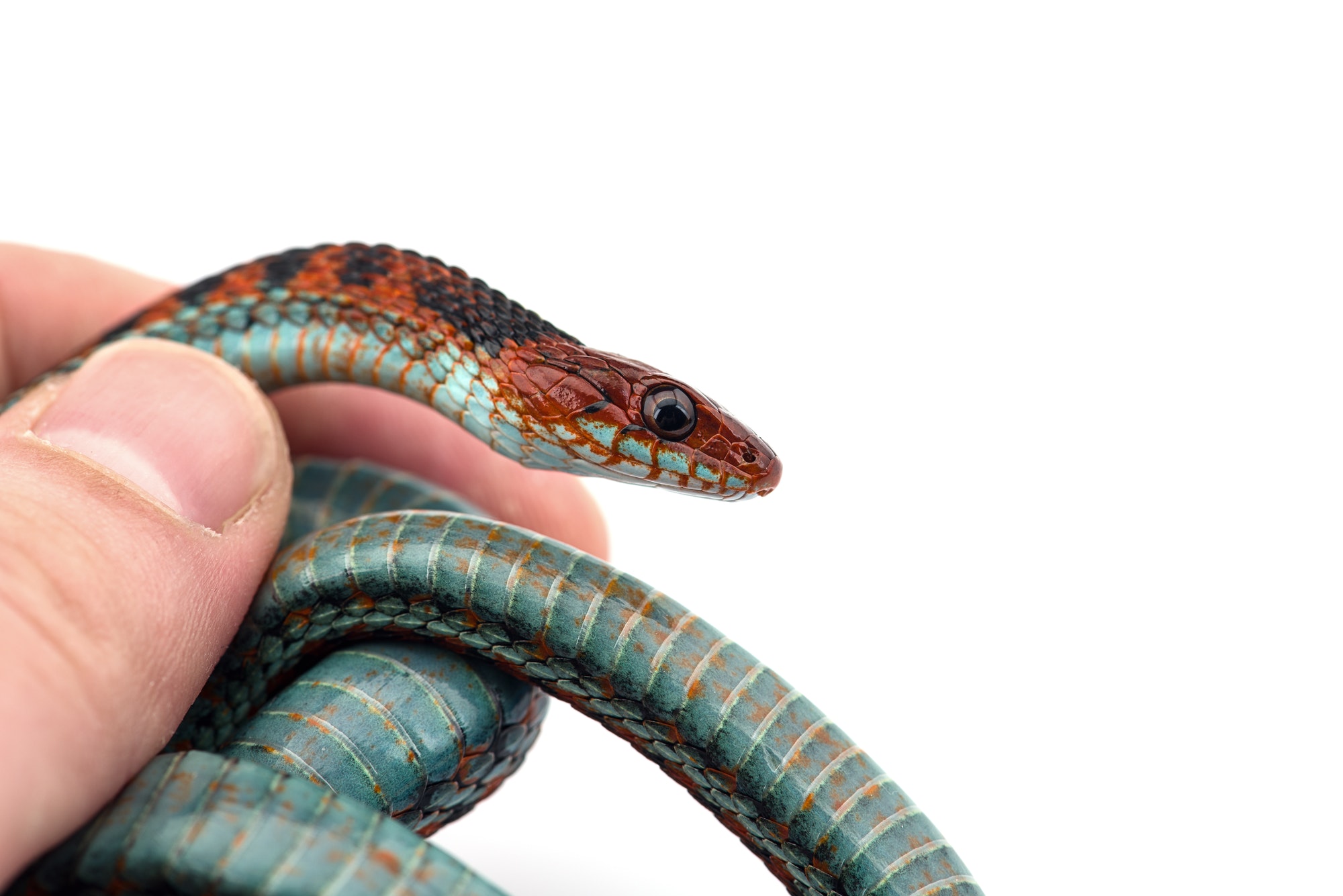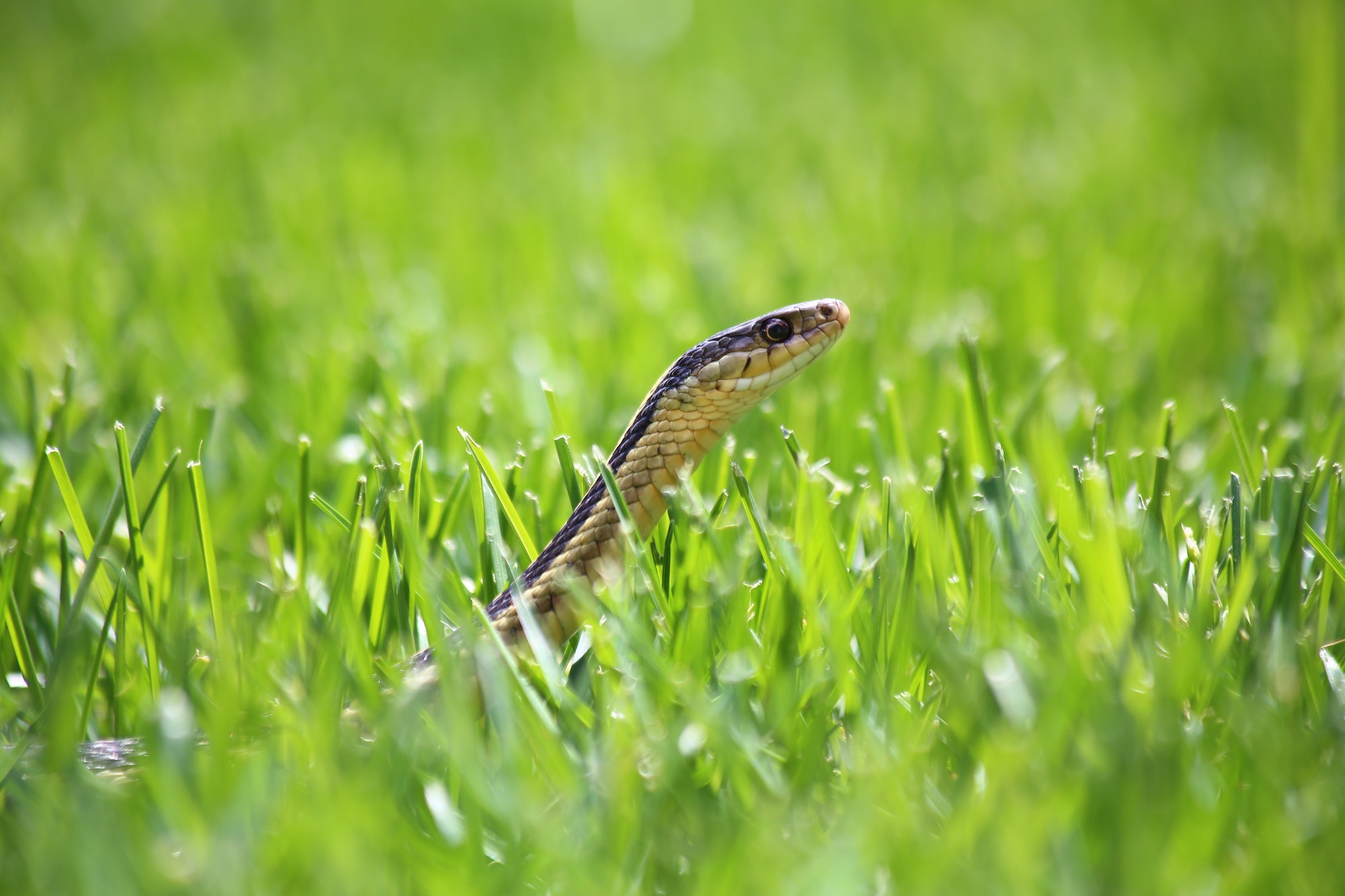Are Garter Snakes Dangerous?
The Gartner Snake is a common snake that lives in North America, ranging from Canada down to the southernmost United States, and is not dangerous at all. There are 30 species of garter snakes, with many more subspecies. Depending on where you live, some of the more common species are the common garter snake, eastern garter snake, red-sided garter snake, and checkered garter snake.
Garter snakes are smaller snakes, only ranging on average from 20 to 30 inches long, and typically only 2-3 inches in diameter. They are slender with a rounded snout. Garter snakes come in a wide variety of colors depending on the species, but most have three longitudinal stripes: one in the center of the back and one on each lower side of the body.

In most species, the stripes are yellowish or greenish, but this varies with species and region. All garters have a two-colored tongue though. Typically the upper portion is red or orange and the lower portion of the tongue is black. Garter snakes are opportunistic snakes, meaning they make their homes wherever is the safest, and will eat all manners of small rodents, amphibians, fish, and even some larger insects. Their diet will primarily depend on where they live, but the snakes tend to prefer living closer to rivers and ponds. While most garters are terrestrial, some variations have been seen in bushes or trees while hunting.
The garter snake is one of the most benign snakes in the wild. They were thoughts to be non-venomous until the early 2000’s, until a group of scientists discovered that there are some subspecies of garter snake, like the common garter snake, which lives all over the US and into southern Canada, that are venomous.

However, the amount of venom in the bite in non-lethal to humans, and even more fortunately, will only cause slight irritation to the skin. Non-venomous variations of garter snake are considered constrictor snakes. Constrictors will bite their prey, and then tightly wind their bodies around the prey.
This causes the blood flow to interrupted to vital organs which kills the prey. Though garter snakes will use their sharp teeth to catch prey, it’s very unlikely these pests will choose to bite a human. They typically only lash out at humans when they are provoked or feel threatened. Many garter snakes will also release a foul-smelling musk just before lashing out at their victim. This musk does not pose any physical harm to humans, but it can leave a skunk-like stench that lingers.
In fact, there are many subspecies of garter snakes that are bred for captivity, and indeed make great pets. Garters are awake during the day, and most pet store variations have less of a musk to them. Garters typically need at least a 30-gallon tank that includes a hot and cold sides to th tank, water, and various branches and other objects to crawl on or rub on. While some pet snakes can be aggressive, they are typically well behaved when raised with frequent handling.








